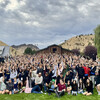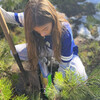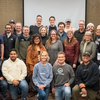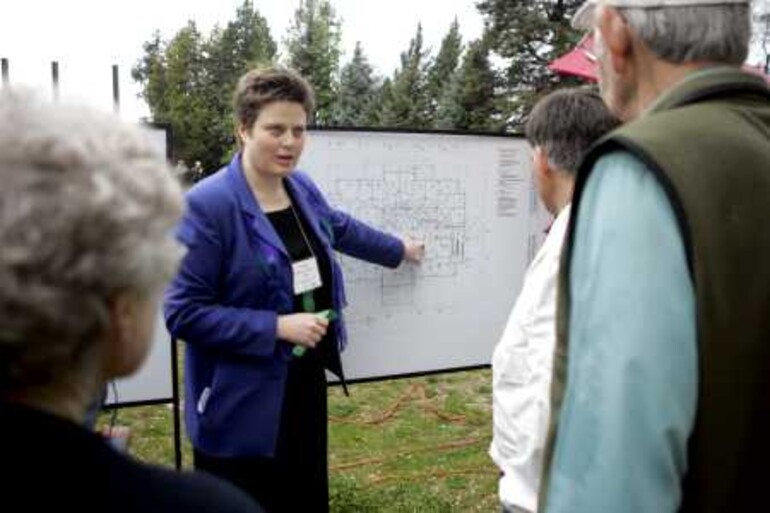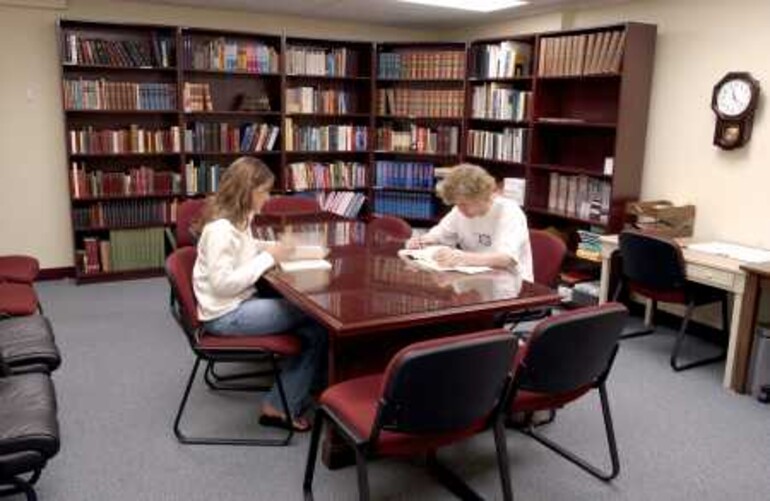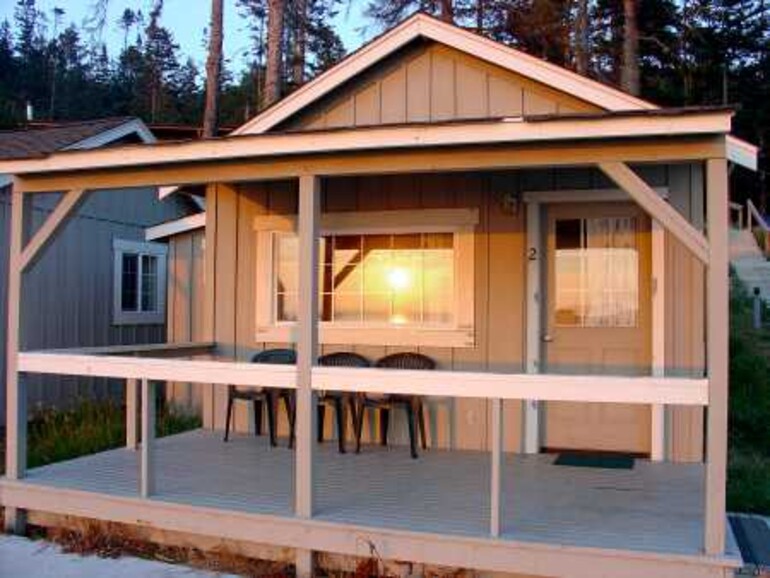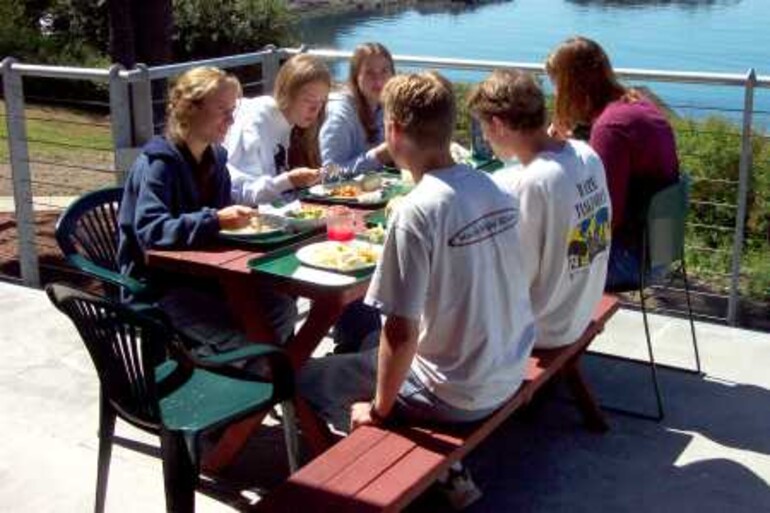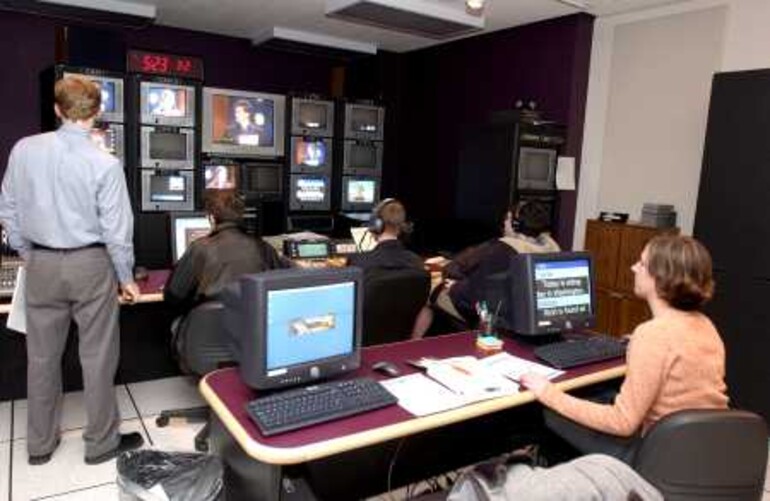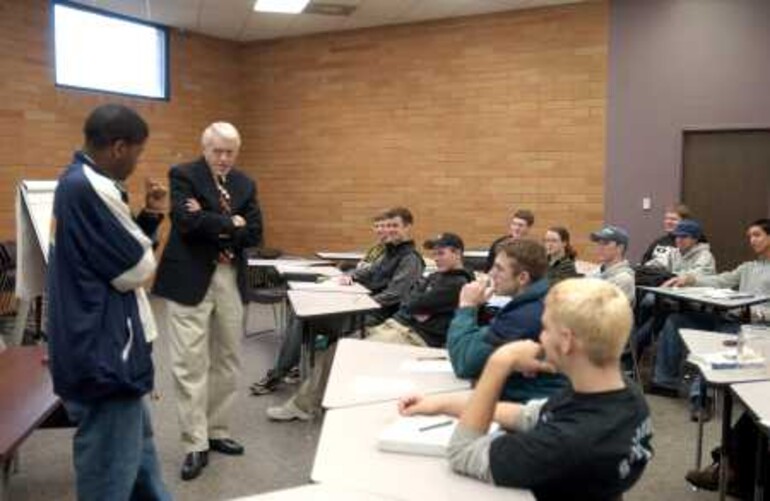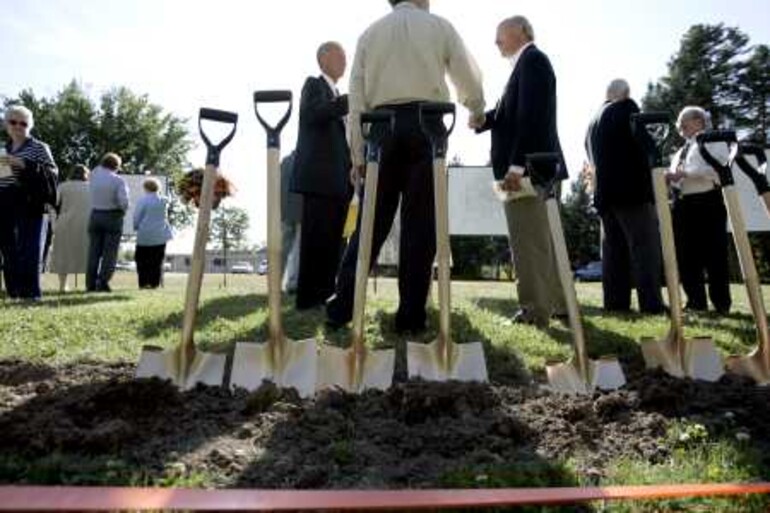Yumiko Numata walked across the platform in June to receive her second degree from Walla Walla College. Completing undergraduate and graduate studies in social work, Yumiko said goodbye after five years on this campus. The Japanese student plans to return to her home country as a social worker, working to meet the continuous and changing needs of others. She has a love for people, young and old, and has completed two internships as a student, one with the elderly and one with children. The friendliness and acceptance of the WWC people brought her to the campus and amplified her desire to care for and serve others. WWC education helped Yumiko focus her talents into her life calling.
Yumiko represents hundreds of today’s students who are fulfilling the mission of WWC. More than a century ago, WWC founders had a vision of establishing a school that would provide a superior education based on Christian values and focused on producing graduates with a heart for service to humanity.
Founded in 1892, WWC has grown from a small school, begun by Seventh-day Adventist pioneers, to a university-level institution, educating engineers, social workers, and scientists as well as pastors, teachers, and artists. The school has flourished, strengthened by its enduring mission.
Walla Walla College has continued in its mission of service to meet the needs of society and to adapt to ever-changing demands. The technological innovations of the past decade have required that the college renew physical structures and programs to better educate students for society. The launching of "Faith in the Vision: the Campaign for Walla Walla College" in 2000, showed a dramatic commitment to rejuvenating the campus for current and future generations of students. This campaign encompasses five major campus renewal projects, including a new administration building.
Currently, three of the five projects have been completed, and students are already enjoying the new facilities. The updated physical settings are matching the excellence of the academic programs.
Against a dramatic view of Rosario Strait, just off the Puget Sound, the students who study biology at the WWC Marine Station near Anacortes, Washington, learn in a unique and natural setting. Each summer this pristine environment becomes home to between 45 and 55 biology students from WWC and other Adventist institutions. Students and faculty spend two months focusing on biological study and research. It is the integration of spirituality and study, however, that has made a Rosario session legendary. Worships on the beach, camaraderie of students and faculty, sightings of whales, and moments of soaking in the glow of beautiful sunsets are among the meaningful experiences. The Marine Station also opens its doors when classes aren’t in session, allowing visitors the opportunity to share in the beauty of the location.
As one of the "Faith in the Vision" projects, the Marine Station has been blessed with the addition of six new cabins and Lindgren Hall, an updated classroom and dining facility. Building and infrastructure improvements have retained the rustic charm but replaced worn and inadequate elements of the original 1920s summer resort.
The study of biology is the study of life, and no matter what professions students go into, those who have studied at Rosario come away with a deeper appreciation and understanding of the delicacy and interconnectedness of life.
The improvements at Rosario are a sampling of the great works accomplished by the campaign; however, the main campus is already seeing some major structural changes of its own.
Many of WWC’s science graduates through the 1980s remember Bowers Hall, as it was renamed in 1955, as the chemistry building. Here, future scientists and medical professionals experimented and studied in the building’s labs and classrooms. Since the chemistry department relocated ten years ago, Bowers has continued to serve the campus.
The Bowers Hall renovation has breathed new life into the historic building. The lower level buzzes with activity, serving as the interim home for the School of Theology. An archeology lab, also on the lower level, immerses students in the cultures of the biblical world.
On the second level, former physics and chemistry classrooms now hold world maps that are the background for lectures by history professors. The second floor currently houses the history department.
Upon completion of the new administration building, these departments will move in and join the other liberal arts departments. Bowers will then have available space for other offices and teaching facilities right in the central part of campus.
For a school that promotes reaching out to people from all walks of life, in all types of communities, communication skills are a primary focus.
The new home of the communication department is designed to put students heading for media and other similar careers at a distinct advantage. In addition to space renovation in Canaday Technology Center, the department now has high-tech digital equipment, providing a professional-level experience for its students.
The new Media Arts Center incorporates several major facilities, most featuring the names of the longtime professors who helped build the department:
• James C. Hannum Studio: television and audio production studios
• Donnie Rigby Stage: black box theater for drama performances
• Positive Life Radio: FM radio station
• Loren Dickinson Speech Classroom: wired classroom for teaching speech and presentation skills.
Formerly housed in the administration building, these studios and classrooms now provide students with the space and technology to better cultivate their communication skills for a society where communication is taking on new forms every day.
The college’s mission to serve humanity is perhaps most directly seen through the aims of the School of Social Work. Regarded as one of the Northwest’s best schools, its master’s degree program attracts students throughout the region. Clinical social workers are the largest group of professionally trained mental-health providers in the United States.
The School of Social Work is in dire need of new and improved facilities and a location more conducive to the interests of students and the campus. Offices are presently located in old houses on the edge of campus, quite a distance from the buildings where classes are taught. The school hopes to move under one roof. Current discussion and planning are underway to begin this phase of the campaign project.
A new area of study is also in the works. While social work students do take classes in aging, and many graduates are serving in this field, the school has hopes of introducing a combination of nursing and social work studies to train students to enter the field where gerontology specialists are critically needed. Administrative professions in the field will also be more in demand, and the need to prepare these future professionals is one that WWC intends to help meet.
At the heart of the "Faith in the Vision" campaign is the construction of the new administration building. More than just a structure, the administration building has been the very heart of the campus. Its current absence creates a hole in the unity of the college.
To those close to Walla Walla College, the story of the school is the story of the original administration building. It was greatly admired for its architectural beauty at the time it opened in 1892. For many years it served the entire college’s needs, including functioning as a dormitory.
Sadly, even great buildings don’t last forever. The administration building failed to meet important fire codes and to allow entry to students with disabilities. Pipes, wires and physical structures were decaying. Renovations were too costly and inadequate to meet all the needs. It was time to retire the building and start over.
Today, the space awaits the rising of a new building that will be safe and support the functional changes, yet incorporate the dignity and charisma of the old design. The now-scattered administrative and financial offices and many academic departments will once again unite under one roof, symbolizing the need for the campus community to come together, work together, and pray together as they continue to keep the fire burning.
Though additional funds need to be collected to meet the campaign's $18 million goal, WWC celebrates the continuing progress. During graduation weekend, college friends and visitors witnessed the groundbreaking ceremony for the new administration building (see story on page 35).
Little by little the steps move forward in renewing the original vision for the college. The stories of gratitude from those who have studied here and from all those whose lives have been touched through this mission, show the importance and value of this venture.
